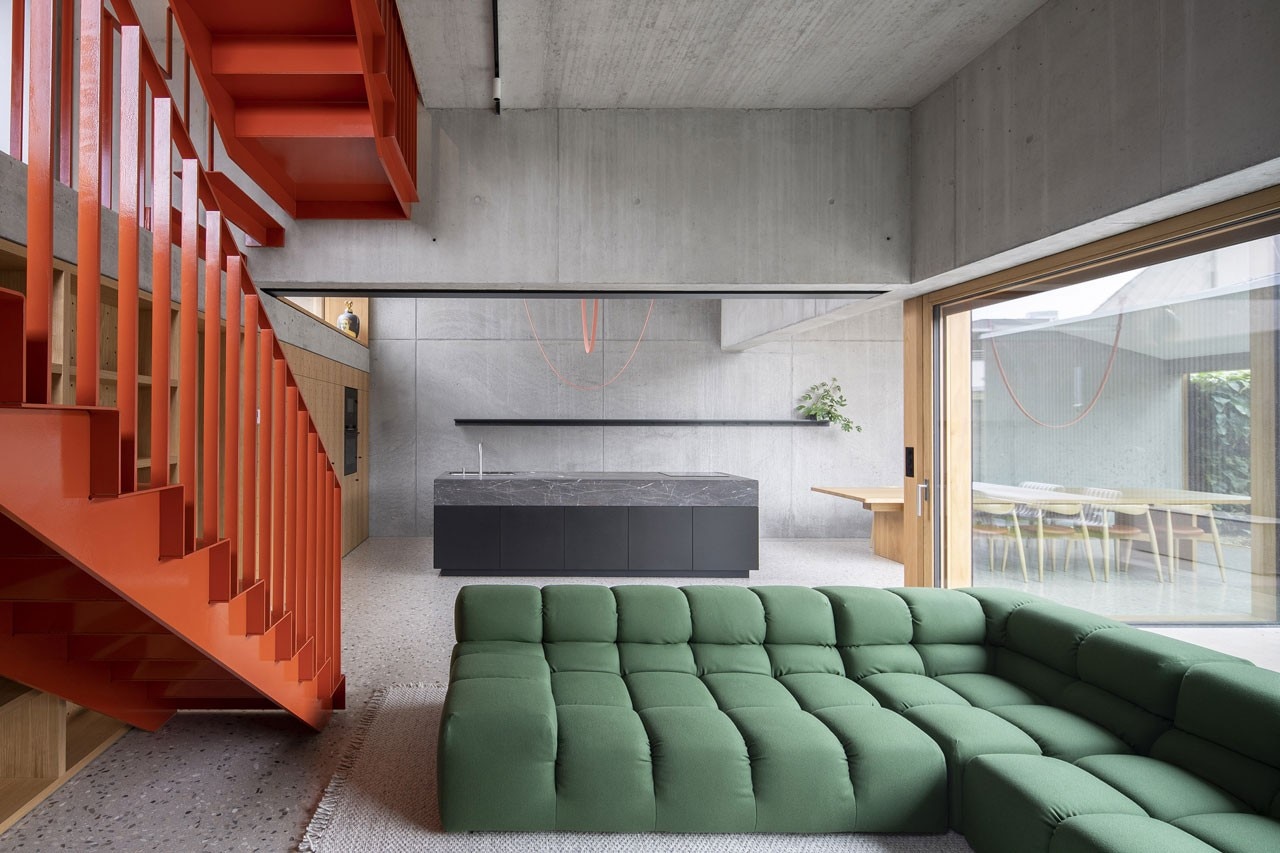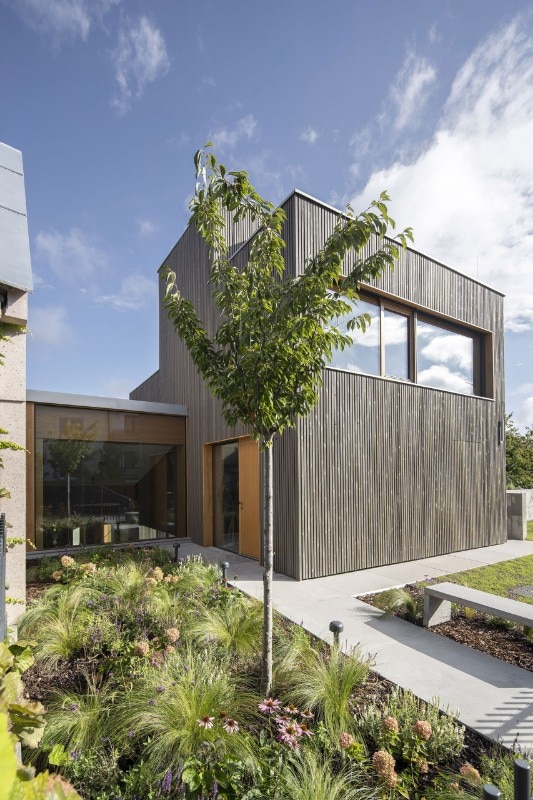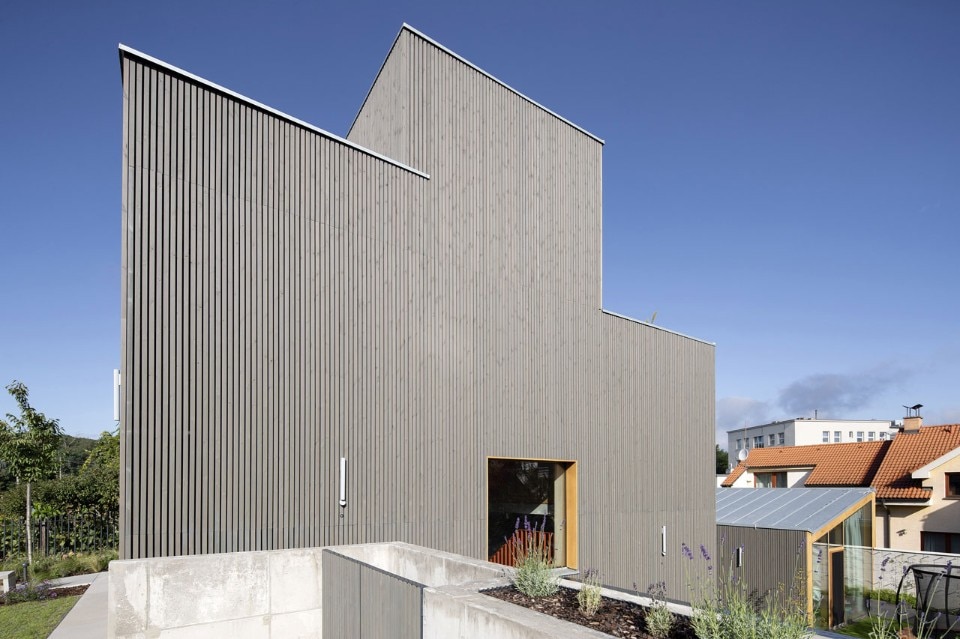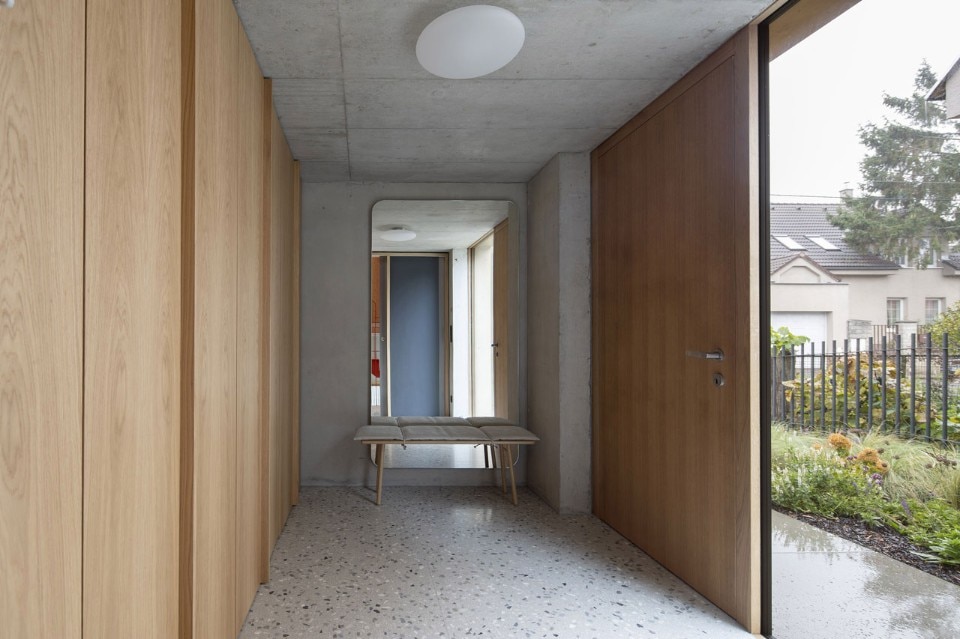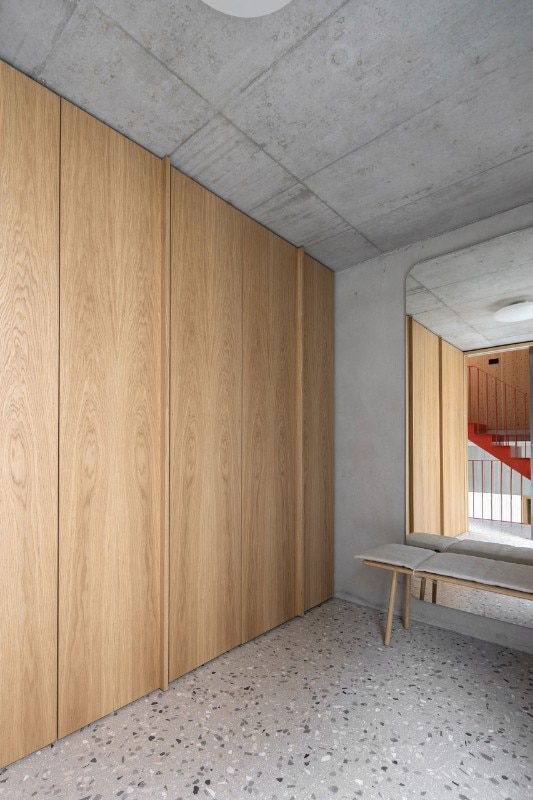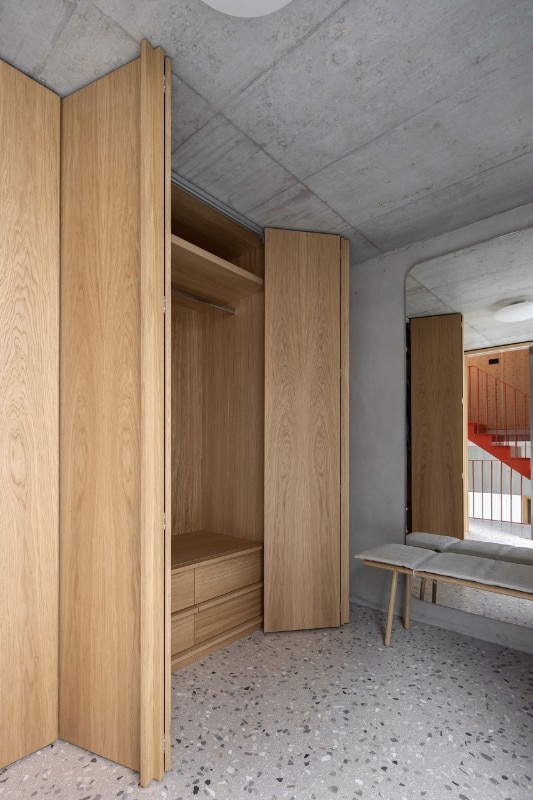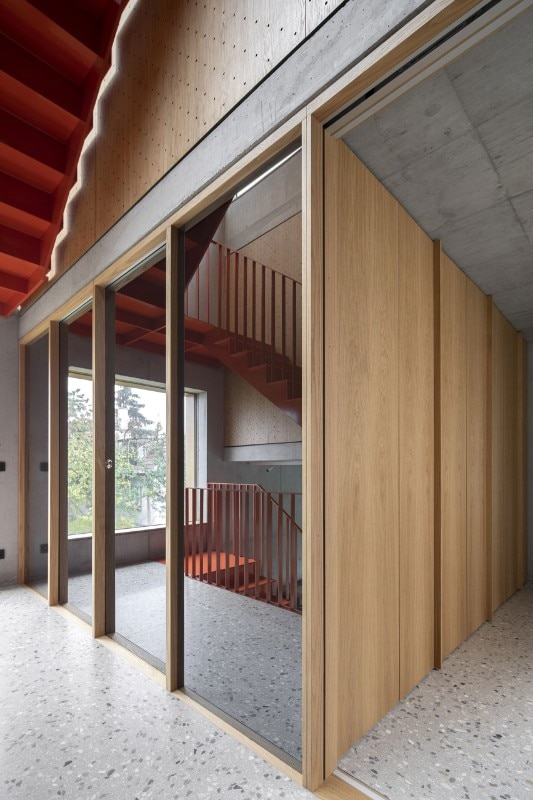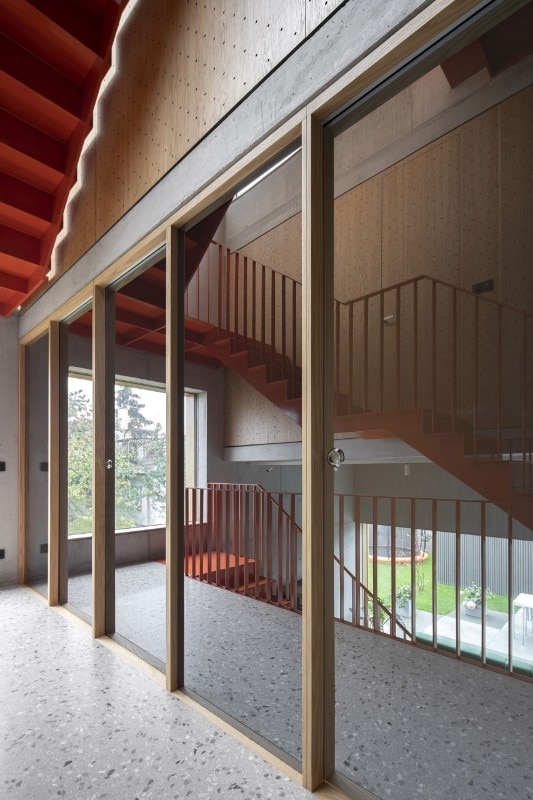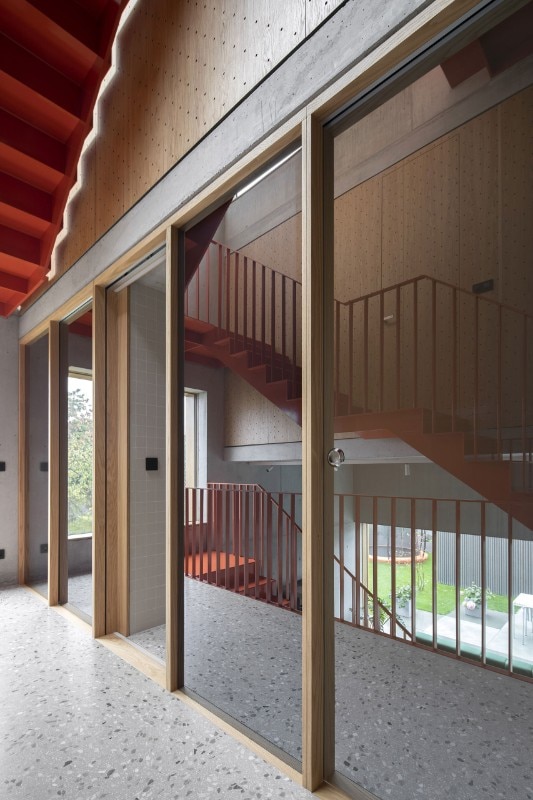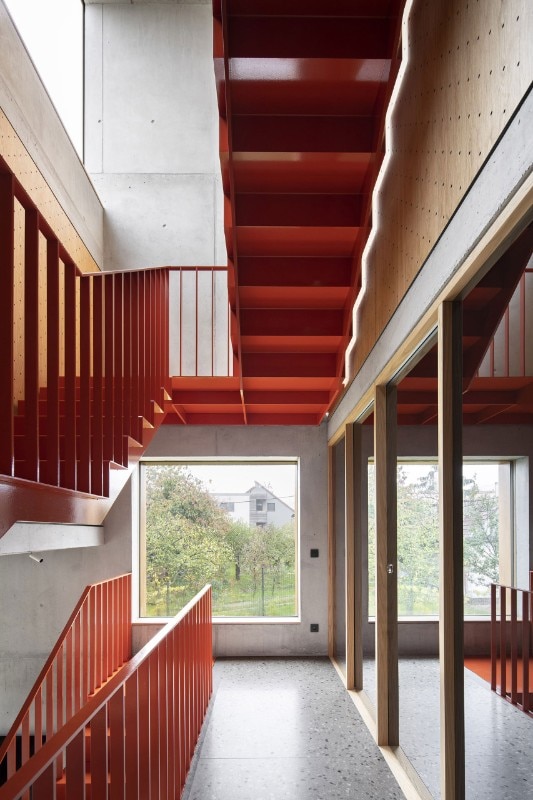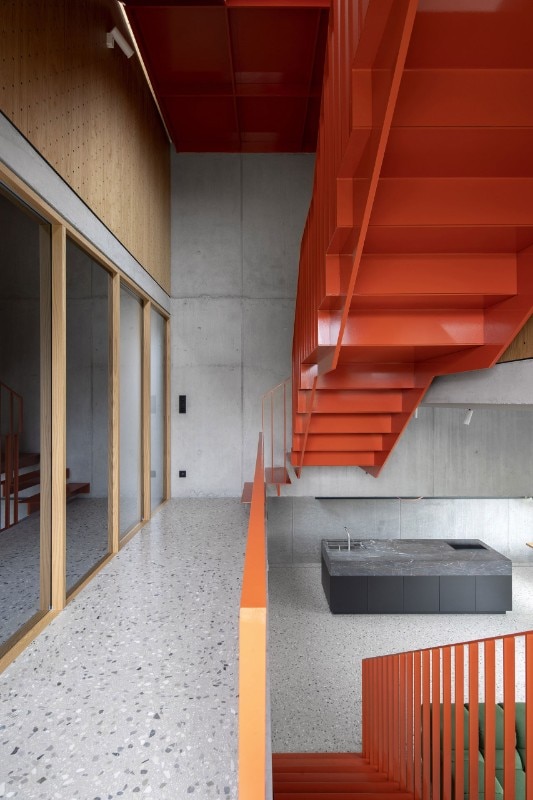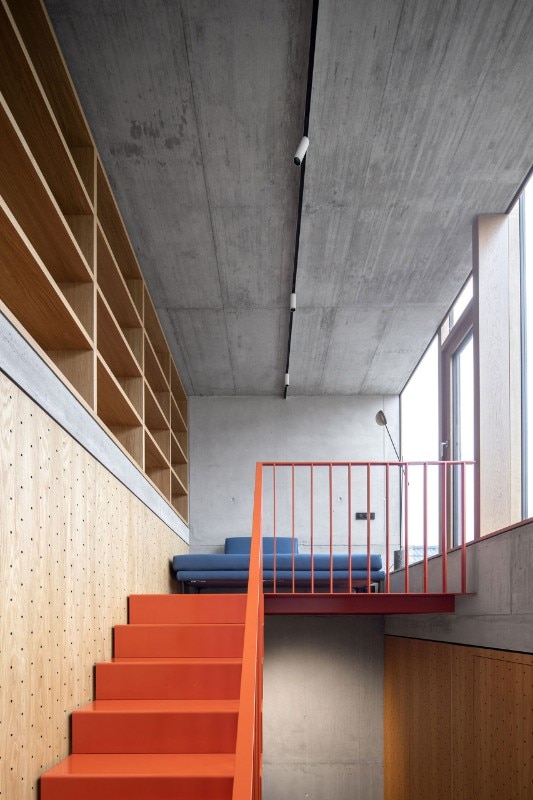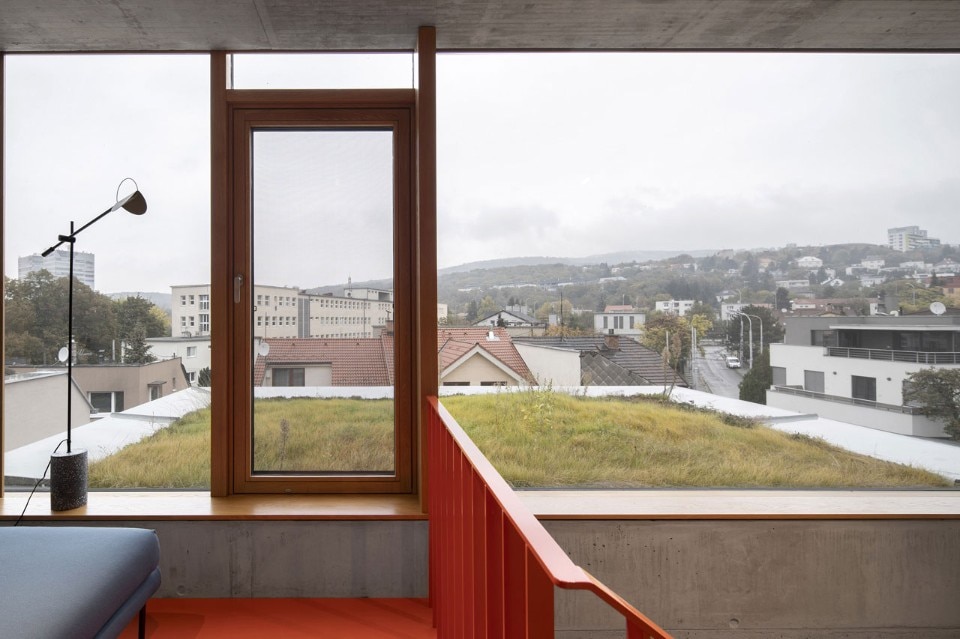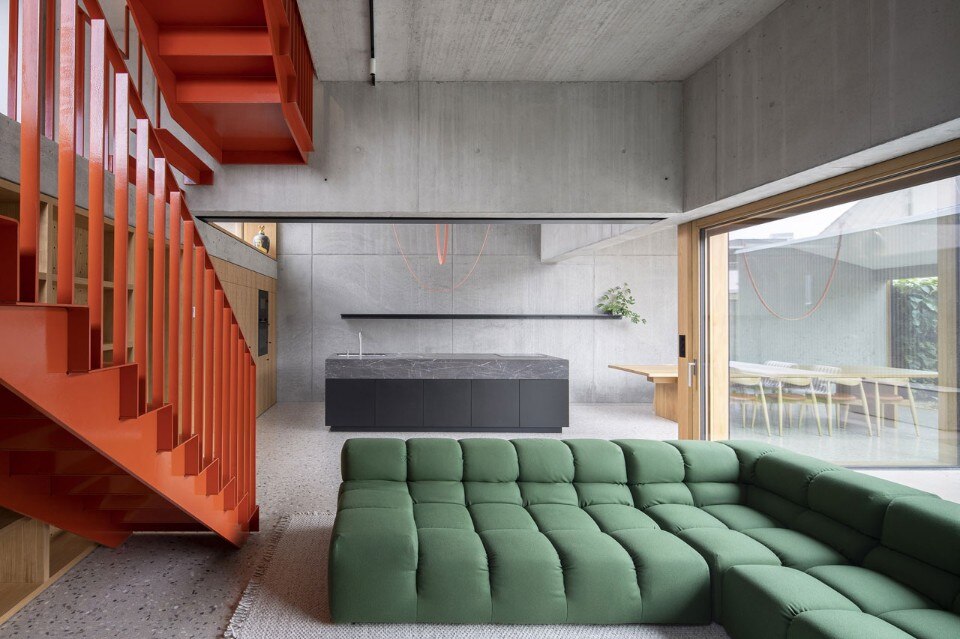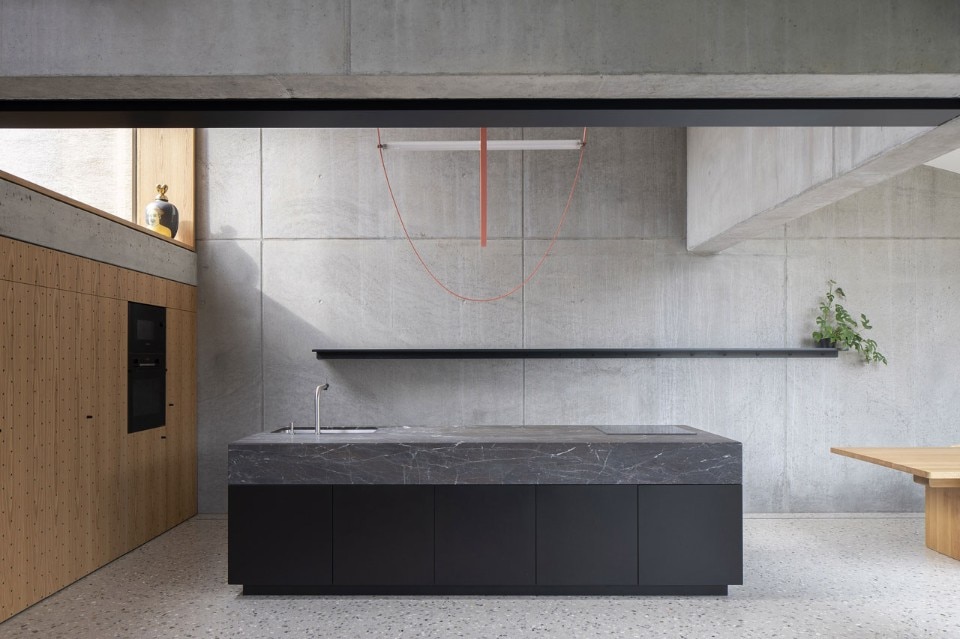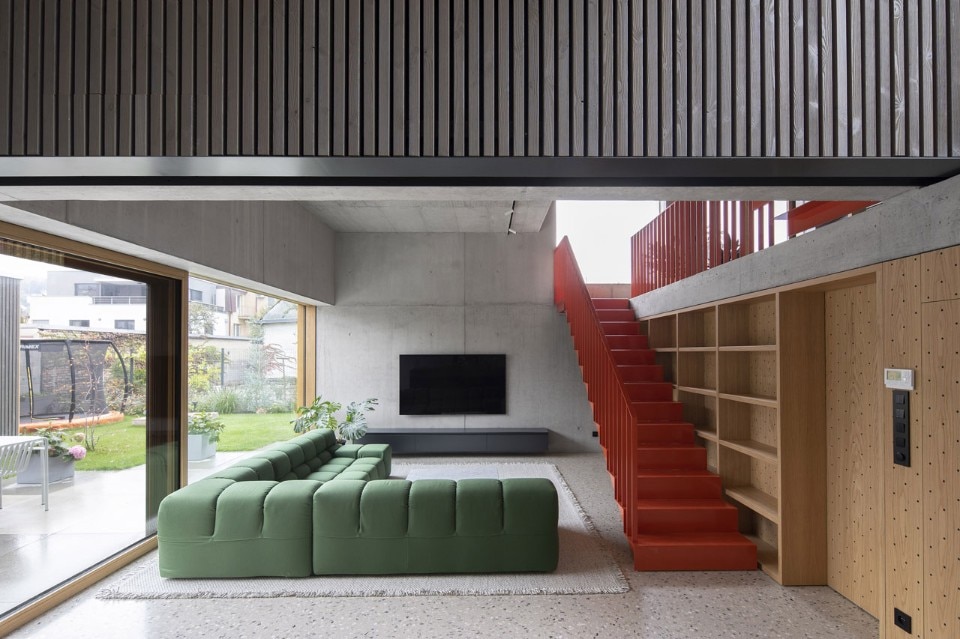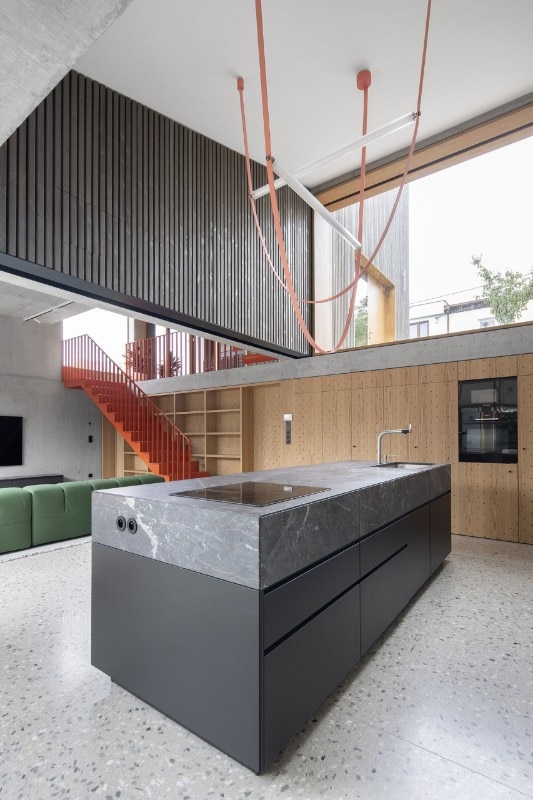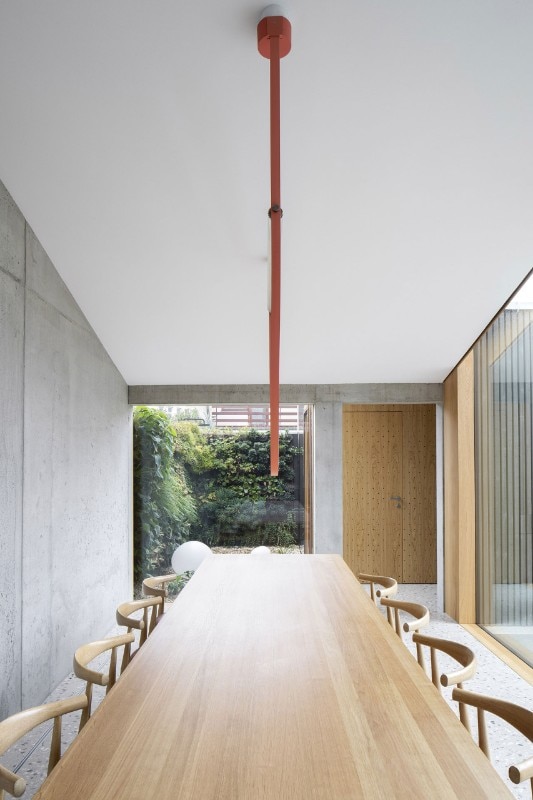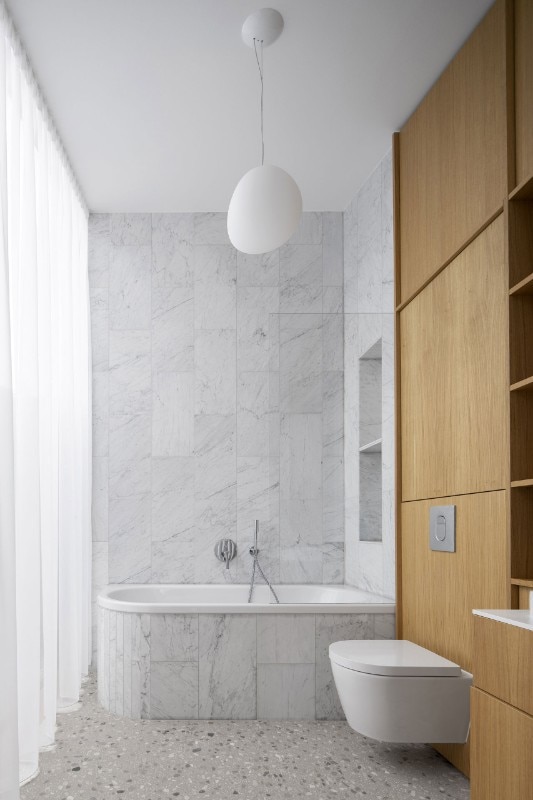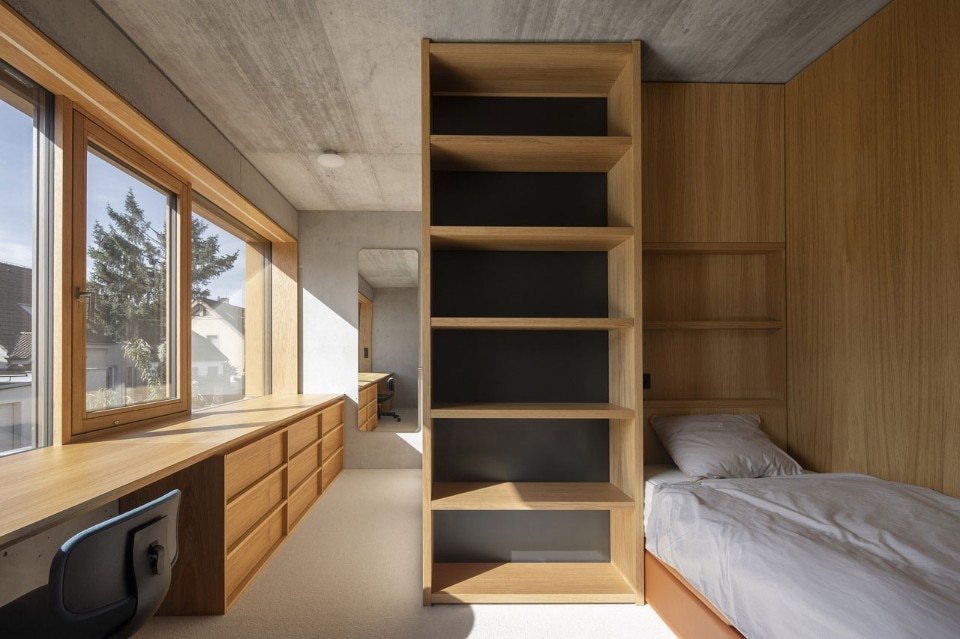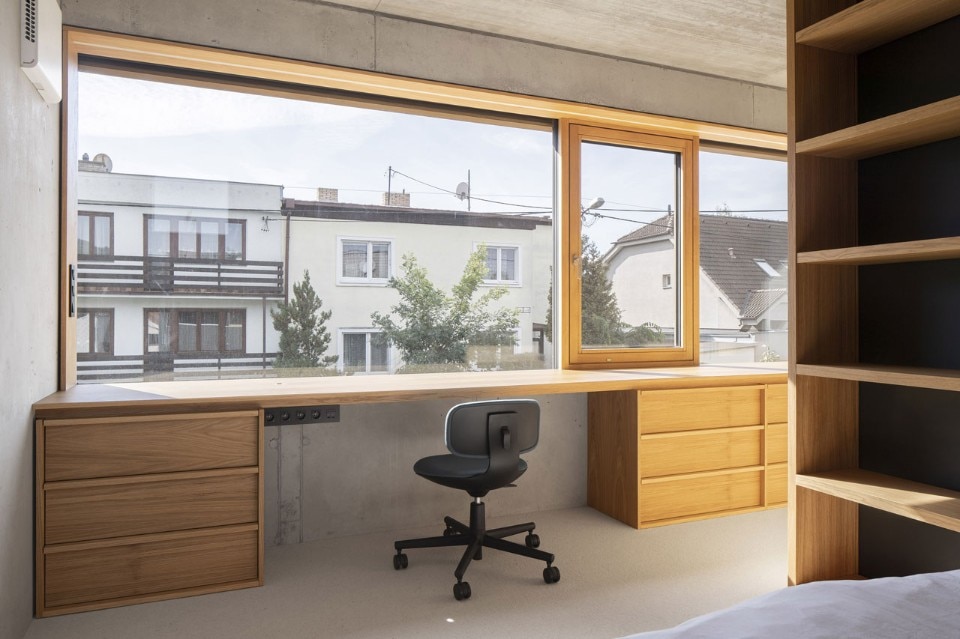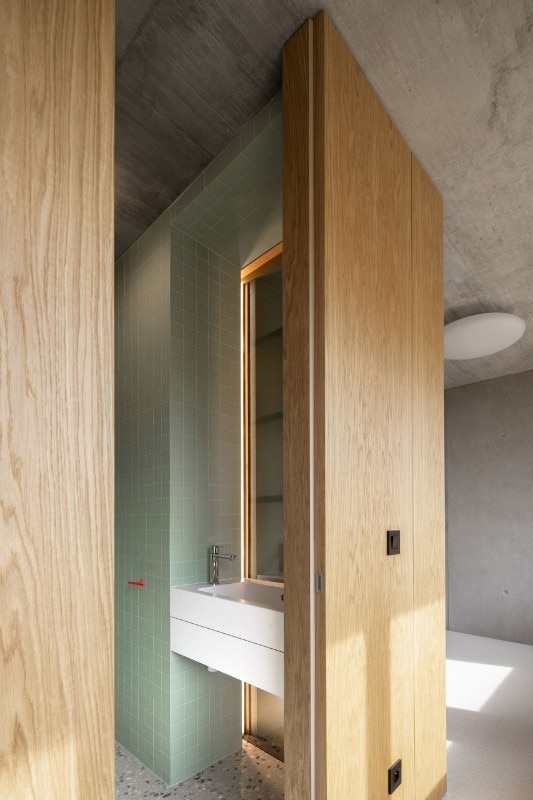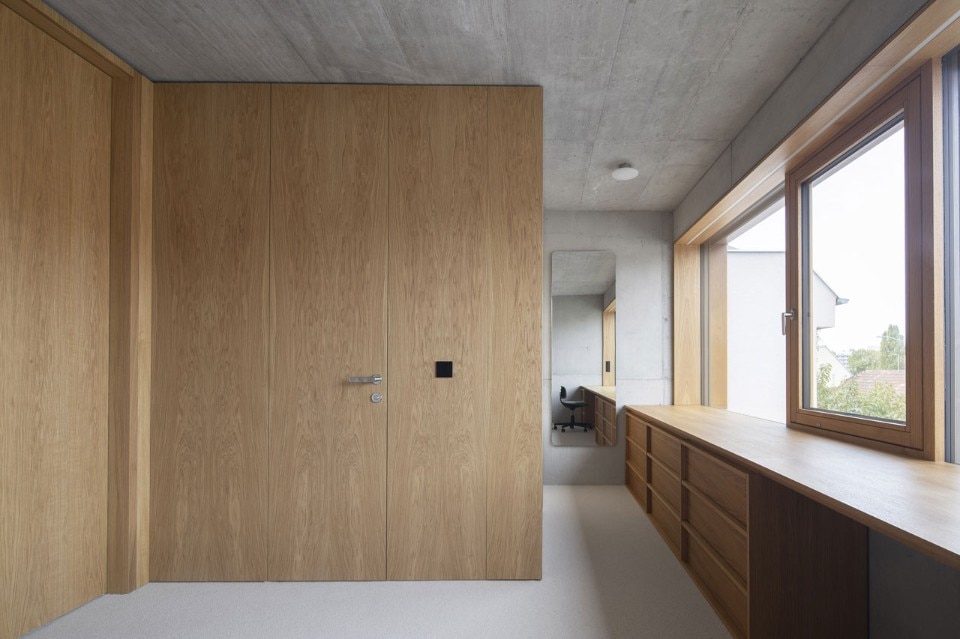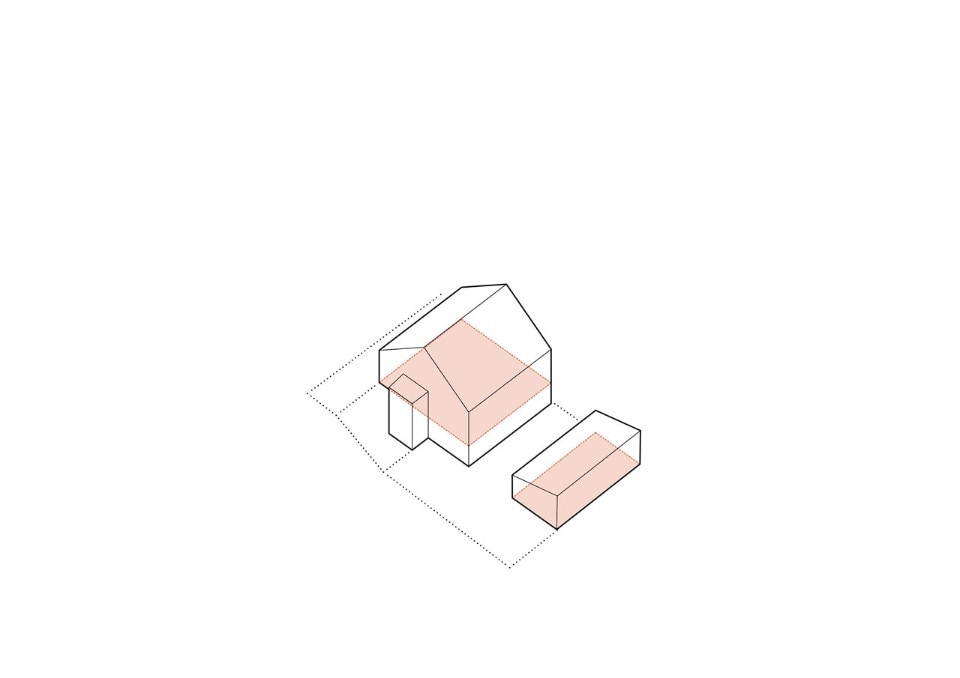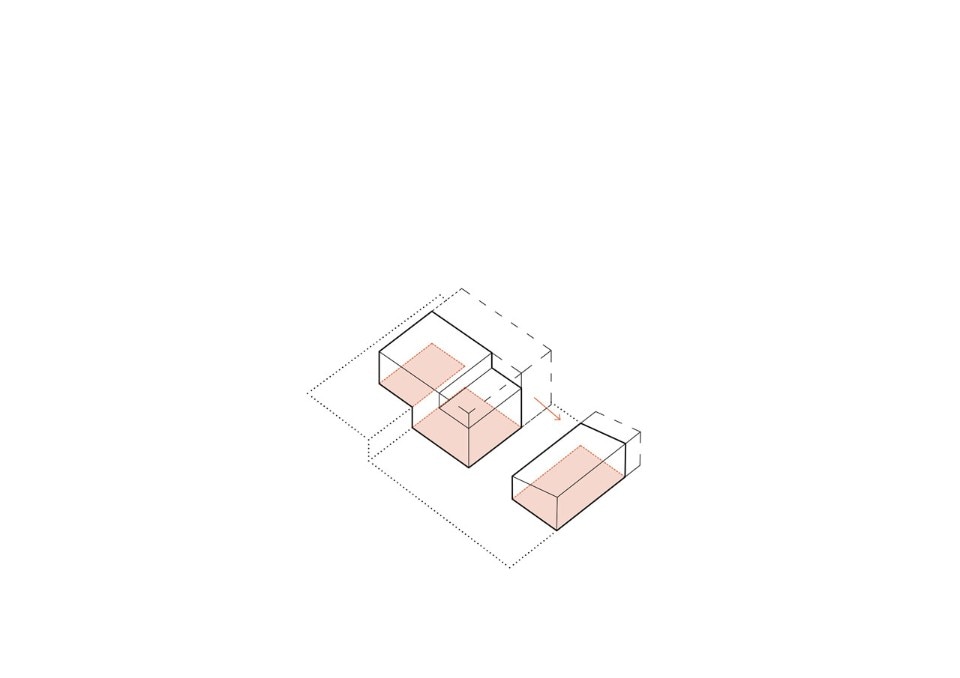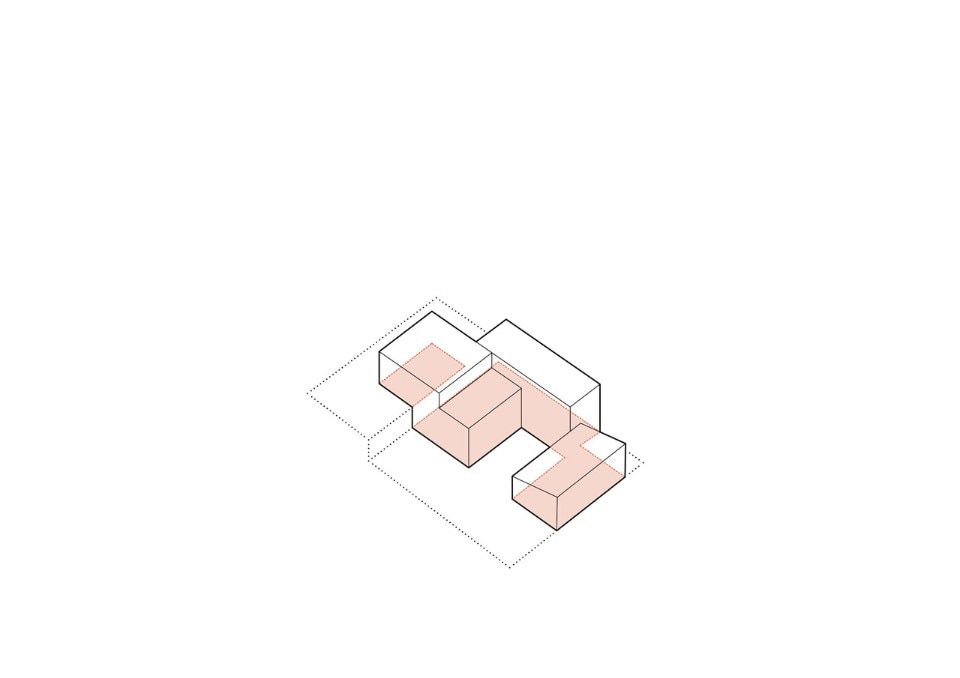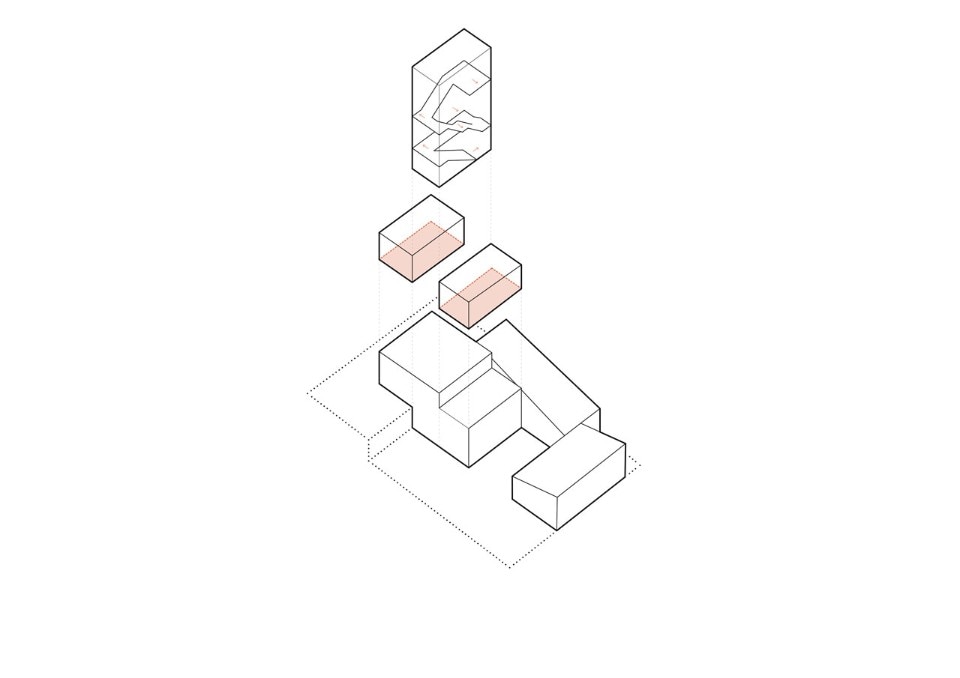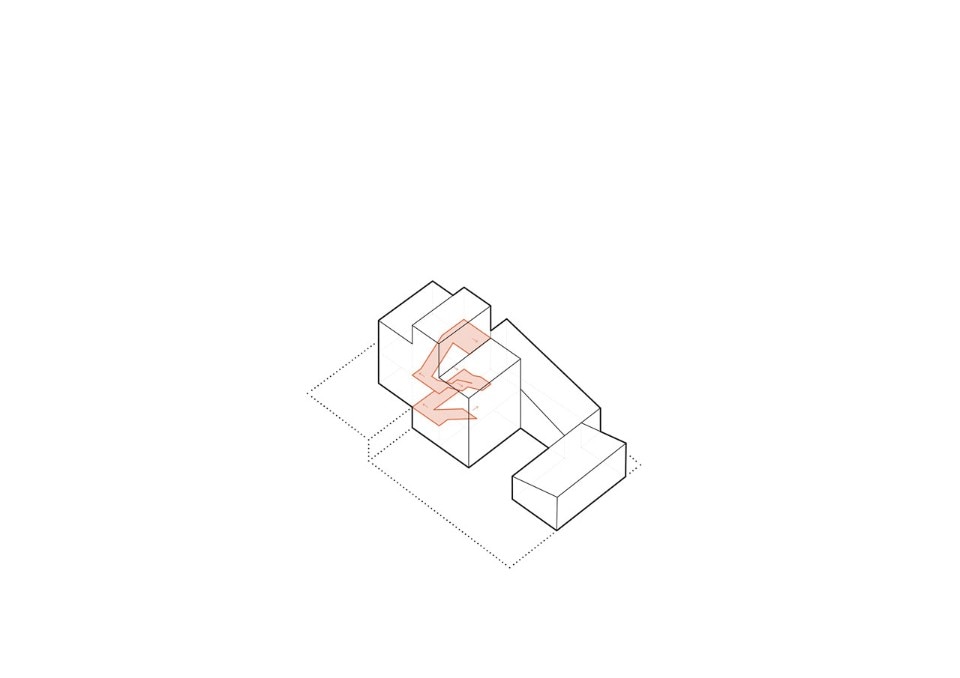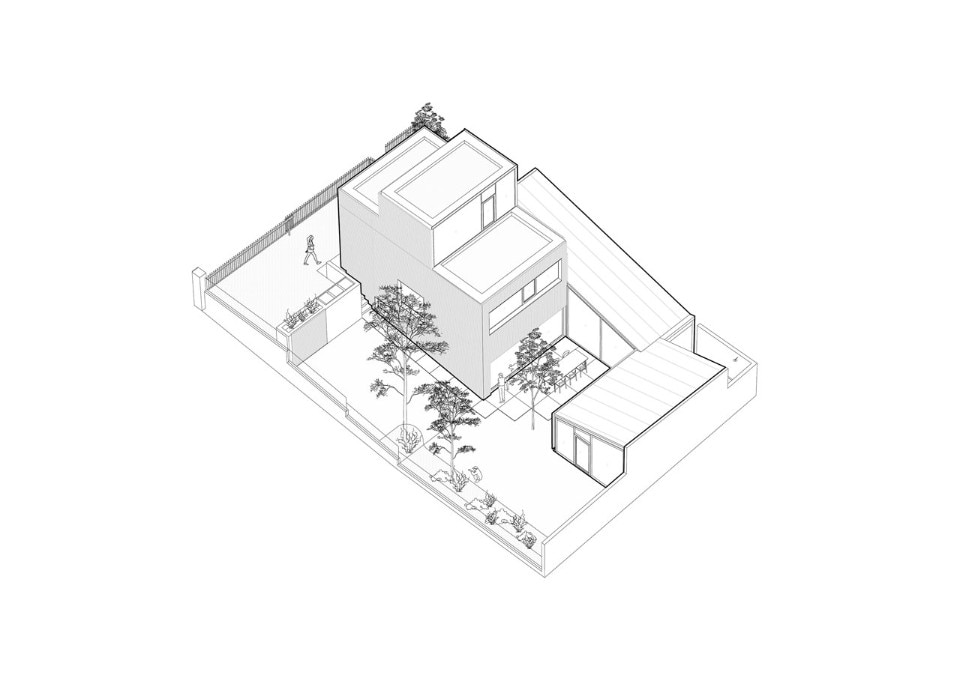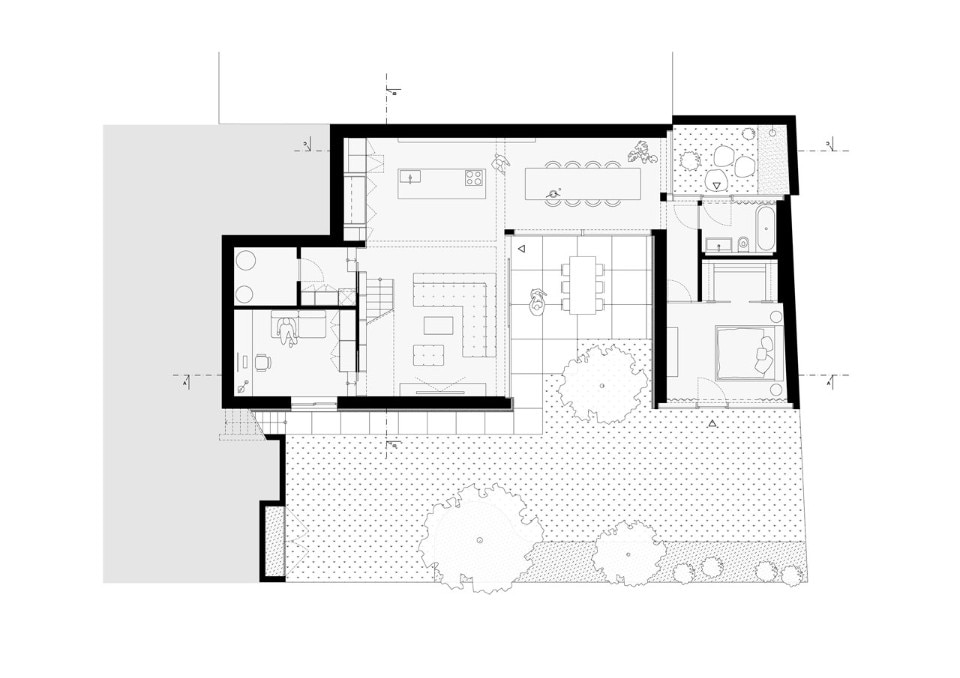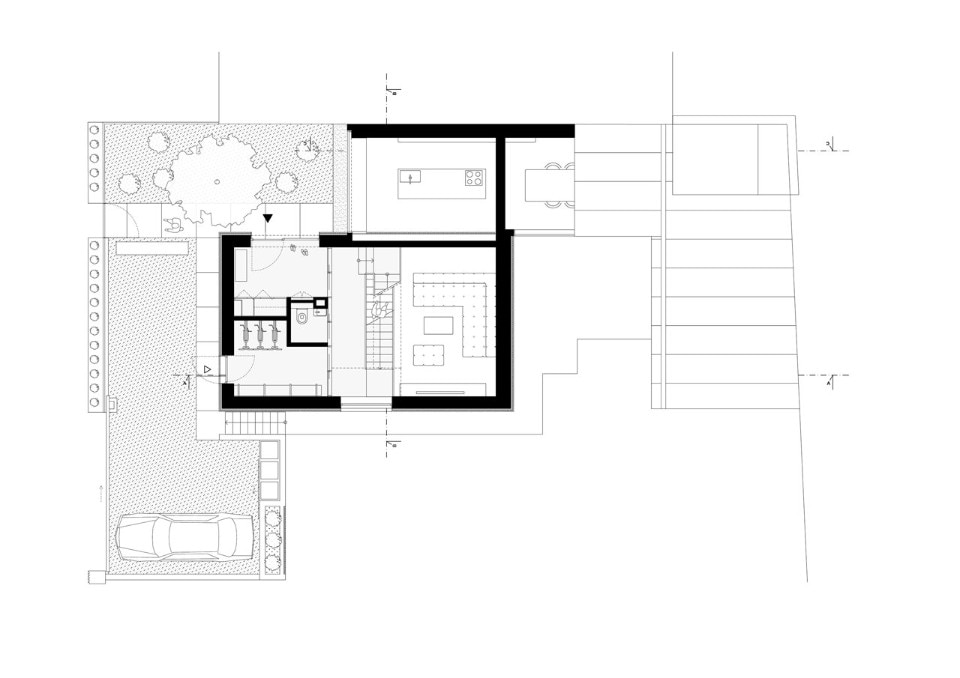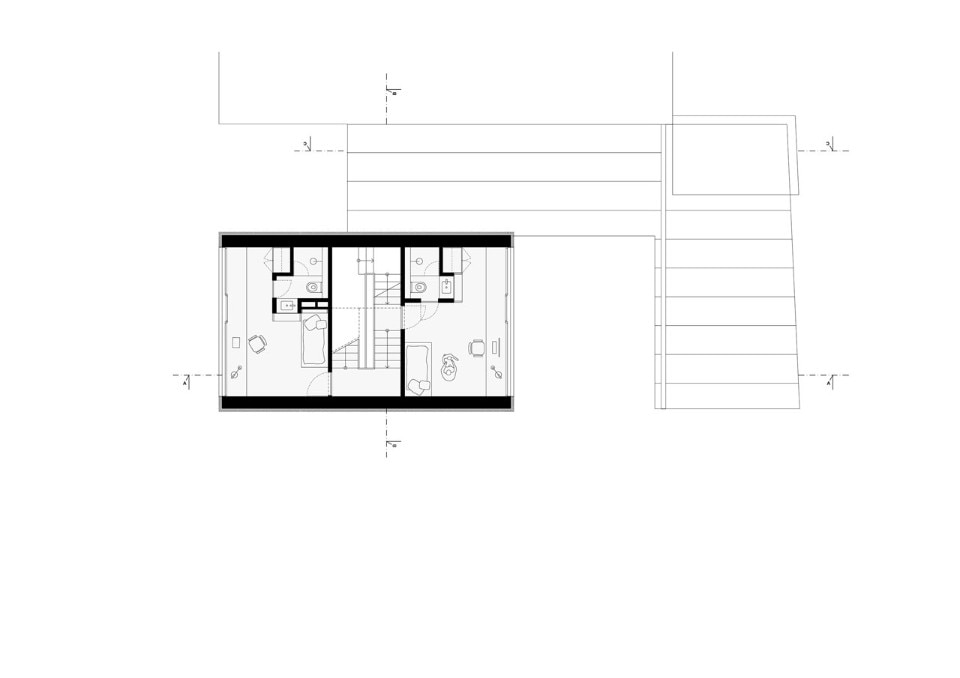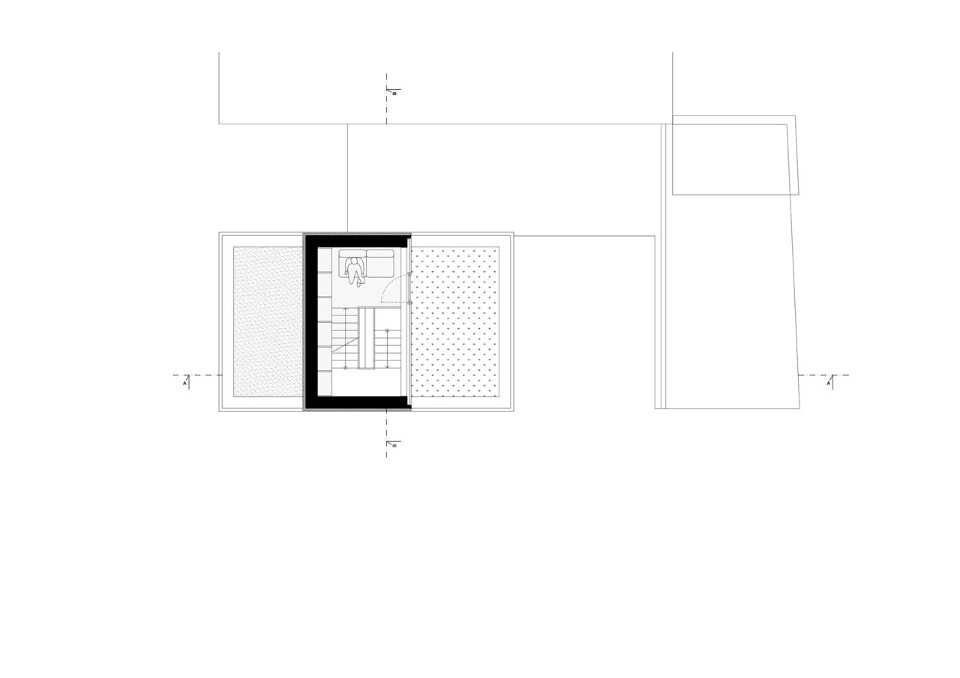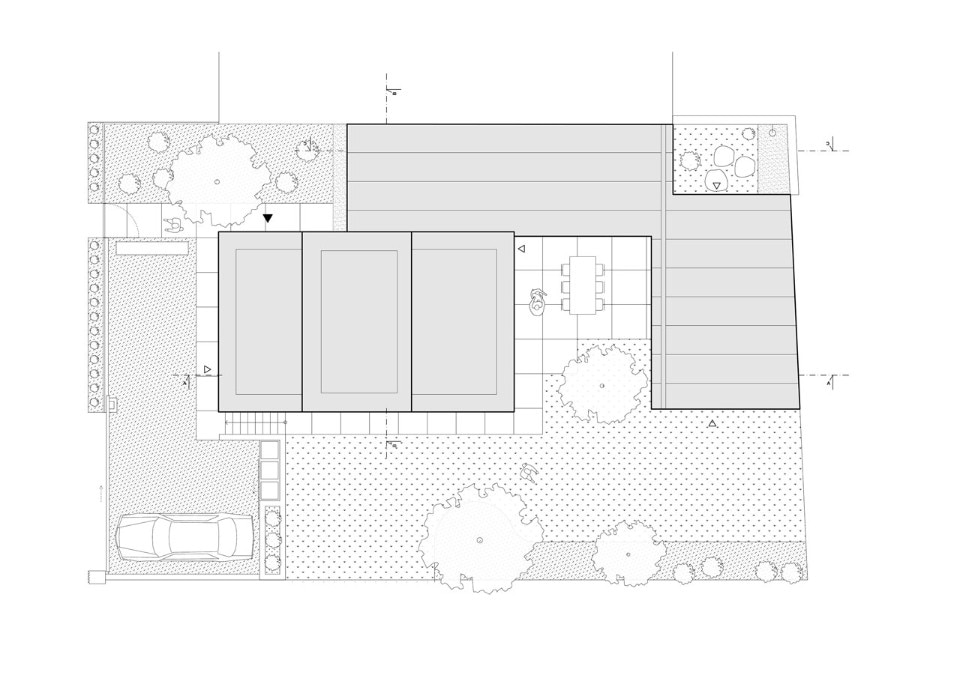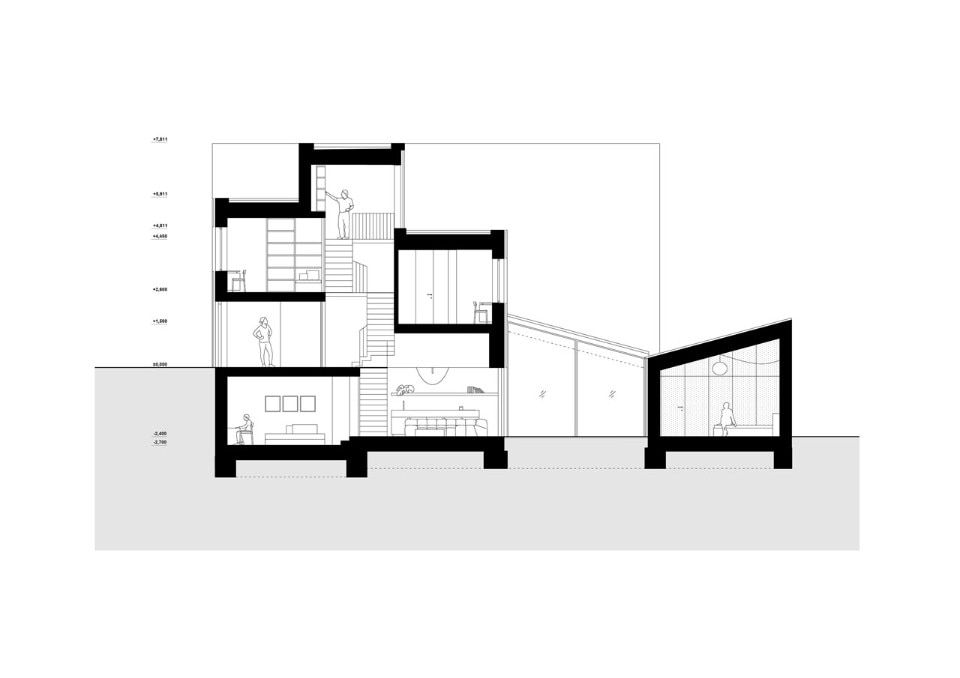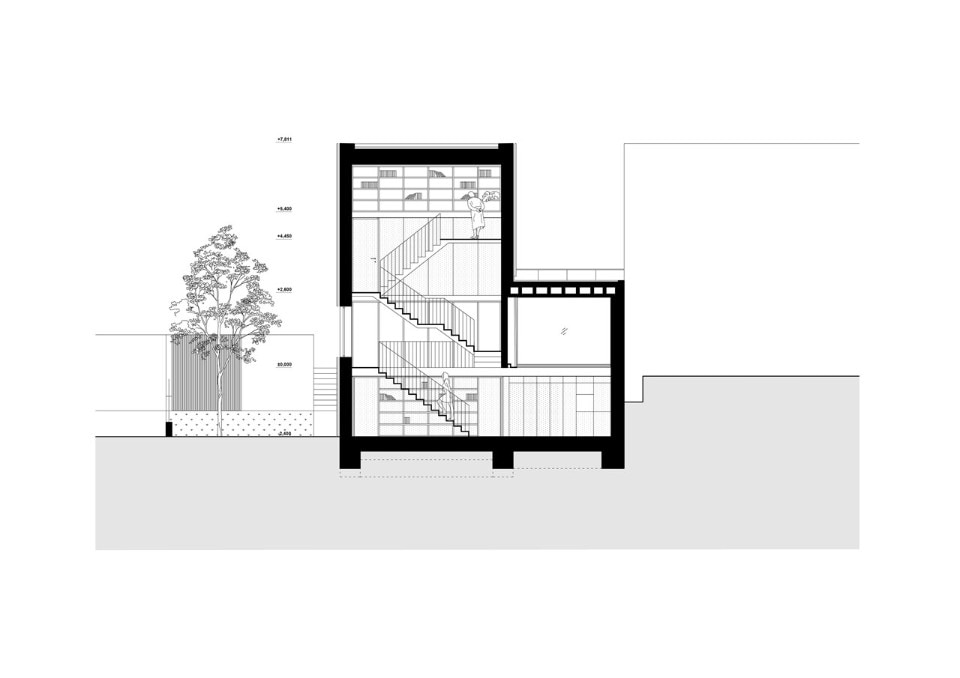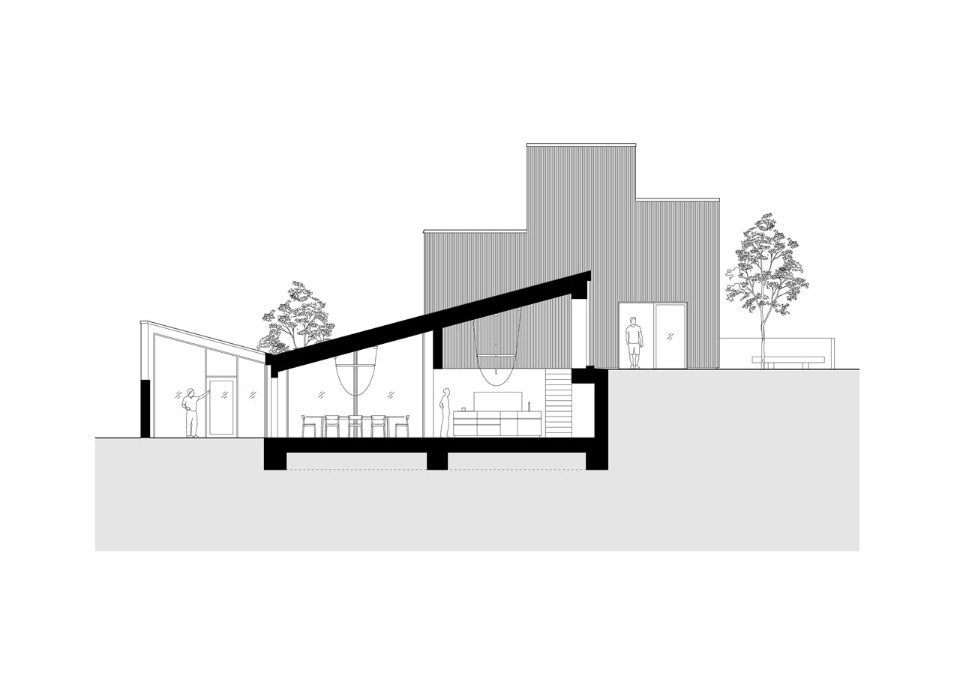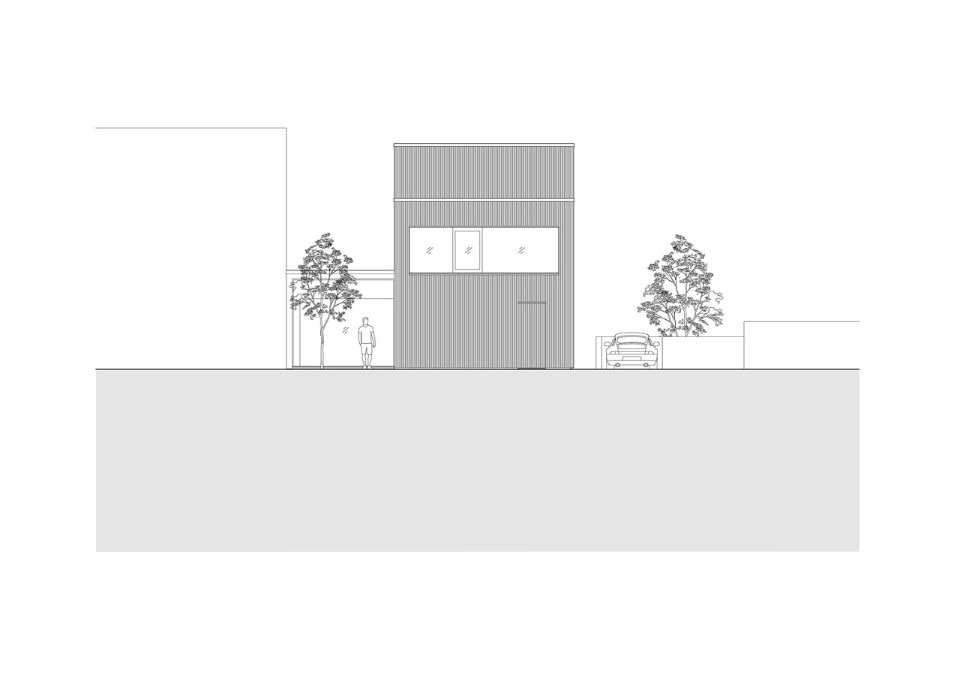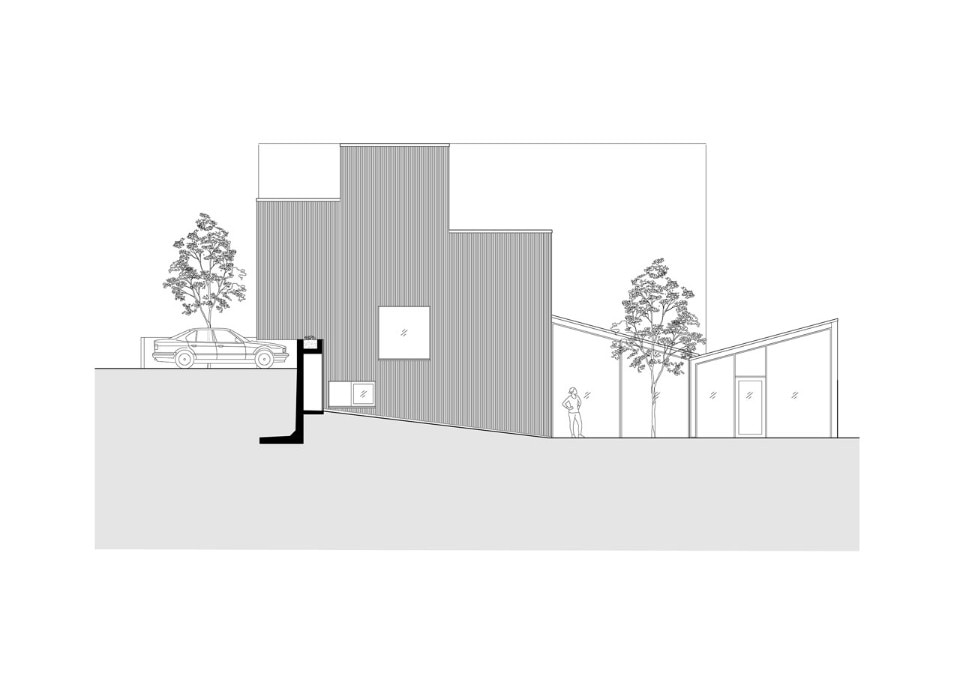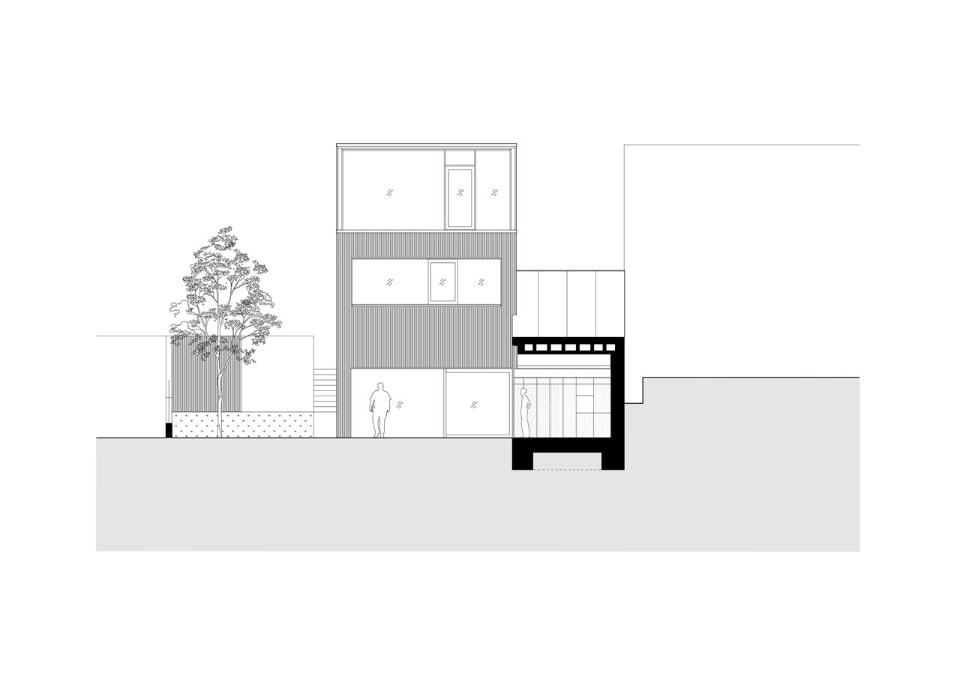In the beginning, there were two volumes and an embankment. The project by NOIZ architekti moves from this specific condition to develop critical reasoning on contemporary living. The leitmotif holding this building’s spaces, shapes, and materials seems to oscillate between autonomy and interpenetration.
The house, indeed, appears as the result of an assembling operation of autonomous volumes characterized by specific geometries and find a common trait in the wooden slats cladding the mass. The frugal language that seems to communicate when viewed from the street, where measured windows interrupt the continuity of the striped pattern, finds a counterpoint in the large glass walls open onto the courtyard.
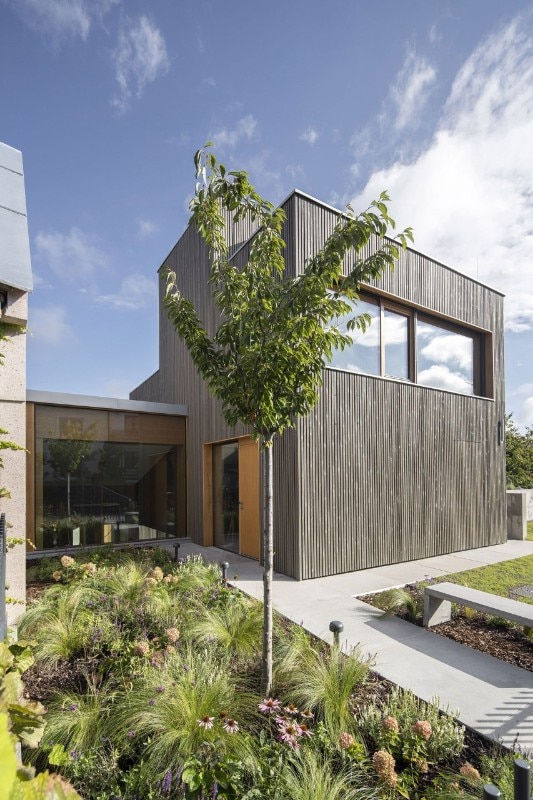
After the demolition of the two original buildings, the main body was rebuilt thinner and without pitches. It was, therefore, possible to add a third volume that, beyond connecting the parts, completes the built border of the sunken garden. Between this and the access from the street, a drop in altitude separates the surrounding urban reality from the courtyard’s privacy.
The building’s crowning seems to follow a similar logic. On the top floor of the tall volume, the flat roof provides a terrace, which becomes a privileged spot to observe the surroundings. Conversely, at the lowered level, the slope of the roof pitch mitigates introspection from the outside and increases the sense of seclusion.
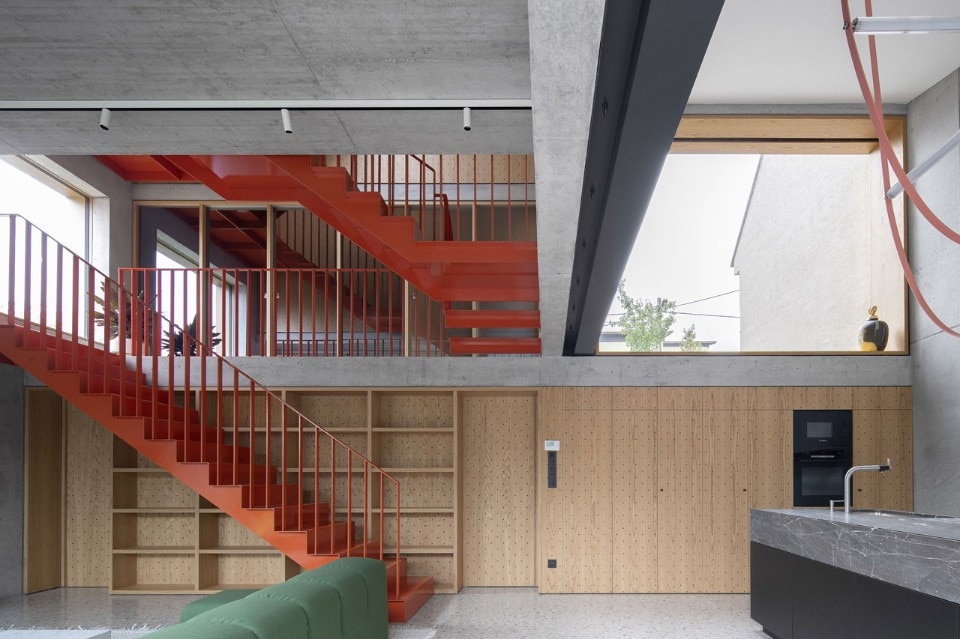
The most interesting architectural situations materialize in the junctions between the three volumes. Two points of particular interest can be mentioned. One is the large glazed wall that overlooks the main driveway and brings what Alberto Campo Baeza would define as diagonal light into the dining area on the lower floor. Another is the positioning and development of vertical distribution. In addition to sorting the paths, dilating the space vertically, and acting as an element of mediation, it conduces to children’s rooms on staggered floors.
Then the interior shows a series of expedients as refined as functional, with fixed furnishings and open or concealed compartments integrated into the walls, movable partitions, and metal elements such as the red staircase, which soften the presence of exposed concrete in the interior spaces.


